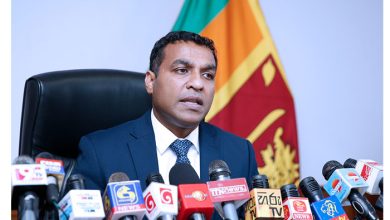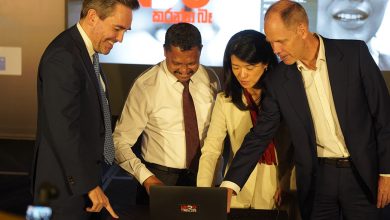Nearly two thirds of global drowning deaths occur in Asia Pacific

In 2019, over 144 000 people drowned in the Asia Pacific region, accounting for 61% of global drowning deaths, according to the first World Health Organization (WHO) regional assessments on drowning prevention released today ahead of World Drowning Prevention Day. Drowning claimed the lives of an estimated 70 000 and 74 000 people in the WHO South-East Asia and Western Pacific regions, respectively.
The two WHO reports, Regional Status Report on Drowning in the Western Pacific and Regional Status Report on Drowning in South-East Asia, also warn that climate change, to which the Asia Pacific region is particularly vulnerable, places already vulnerable communities and individuals at increased drowning risk. More frequent and extreme weather events can lead to more regular and intense floods, increasing populations’ exposure to potentially hazardous interactions with water.
Non-fatal drowning – where individuals are rescued and/or resuscitated – also results in a substantial number of hospitalizations in the two WHO regions, and can cause severe brain damage that may result in long-term disabilities such as memory problems, learning disabilities and permanent loss of basic function.
“Despite many lives being lost each year, drowning remains a largely unrecognized threat to health and well-being,” said Dr Poonam Khetrapal Singh, WHO Regional Director for South-East Asia. “We need to work across all sectors to develop national water safety plans and policies and implement tested and low-cost water safety interventions to prevent drowning and save lives. No child or adult should lose their life to drowning.”
The new reports provide countries with WHO-recommended best practices on drowning prevention interventions and policies, including day care for children, the use of barriers for controlling access to water, public awareness campaigns focused on behaviour change, and policies and legislation on water safety, including regulation of recreational boating and maritime transport.
“We are proud to be able to highlight, through these two reports, examples from our Member States of leadership, innovation and strong partnerships within and beyond the health sector on drowning prevention,” said Dr Takeshi Kasai, WHO Regional Director for the Western Pacific.
In the South-East Asia Region, most drowning deaths occur among children and men
Of the 70 000 drowning deaths in the WHO South-East Asia Region in 2019, more than 33% were among children aged under 15 years. On average, men were three to four times more likely to drown than women.
There have been pockets of success towards reducing drowning in countries of the Region. Among the 10 out of 11 countries in the Region that contributed to the report, four reported having national or subnational strategies, policies or plans to reduce drowning. Yet, only Thailand has set targets to measure progress towards its goals.
Reflective of the diversity of the Region, the impact of drowning and effective approaches to its prevention differ across and within countries. While some governments have well-developed water safety strategies and well-established national mechanisms for drowning prevention, other countries are at an early stage of developing and expanding drowning prevention interventions.
Efforts, especially for at-risk groups such as children, include: survival swim and water skills training in Bangladesh, India, Nepal, Sri Lanka and Thailand; community-based day care/creches for young children in Bangladesh, India and Thailand; and improved information systems and public awareness campaigns focused on behaviour change in Thailand.
In the Western Pacific Region, males and people aged 65 and older at greatest risk of drowning
Older people accounted for 34% of drowning deaths in the WHO Western Pacific Region in 2019. Men are at higher risk than women– in 2019, 66% of drowning deaths in the Region were among men.
There are large disparities in drowning rates across the Western Pacific, with rates in lower-middle-income countries nearly four times higher than those in high-income countries. For example, The Federated States of Micronesia has the highest drowning death rate at 15.1 per 100 000 population compared to Australia where the rate is 0.7 per 100 000.
Twenty of the Region’s 37 countries and areas participated in the report, of which eight reported having either national or subnational strategies, policies or plans to reduce drowning. Additionally, 15 countries reported having systems in place to capture national data on drowning and implementing mass media campaigns on drowning prevention.
The Western Pacific Region reported a wide range of drowning prevention interventions: 14 nations provide childcare/child supervision programmes to keep children safe from water, 17 teach children water safety skills, 19 teach bystanders safe rescue and resuscitation, and all countries have early warning systems for disaster risk reduction preparedness.
Notes to editors:
Since the launch of WHO’s Global report on drowning preventing a leading killer in 2014 and the follow-up resource Preventing drowning: an implementation guide in 2017, WHO has been working to scale up advocacy and action for the prevention of drowning.
World Drowning Prevention Day will be observed for the first time on 25 July 2021, following the adoption on 28 April 2021 of the first-ever United Nations General Assembly resolution on global drowning prevention.
The 11 countries of the WHO South-East Asia Region: Bangladesh, Bhutan, the Democratic People’s Republic of Korea, India, Indonesia, Maldives, Myanmar, Nepal, Sri Lanka, Thailand and Timor-Leste.
The 37 countries and areas of the WHO Western Pacific Region: Australia, Brunei Darussalam, Cambodia, China, Cook Islands, Fiji, France (which has responsibility for French Polynesia, New Caledonia, and Wallis and Futuna), Hong Kong SAR (China), Japan, Kiribati, the Lao People’s Democratic Republic, Macao SAR (China), Malaysia, the Marshall Islands, Micronesia (Federated States of), Mongolia, Nauru, New Zealand, Niue, Palau, Papua New Guinea, the Philippines, the Republic of Korea, Samoa, Singapore, Solomon Islands, Tokelau, Tonga, Tuvalu, the United Kingdom of Great Britain and Northern Ireland (which has responsibility for Pitcairn Islands), the United States of America (which has responsibility for American Samoa, the Commonwealth of the Northern Mariana Islands, and Guam), Vanuatu, and Viet Nam.






